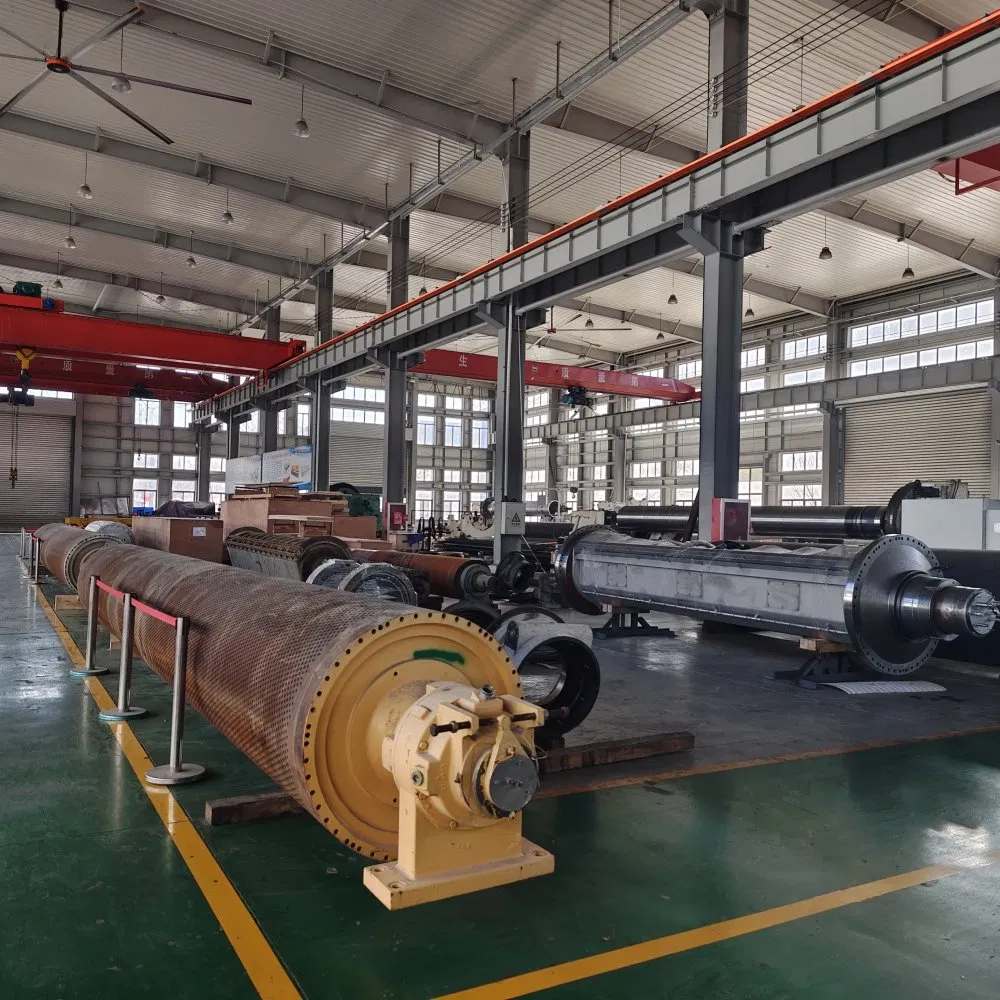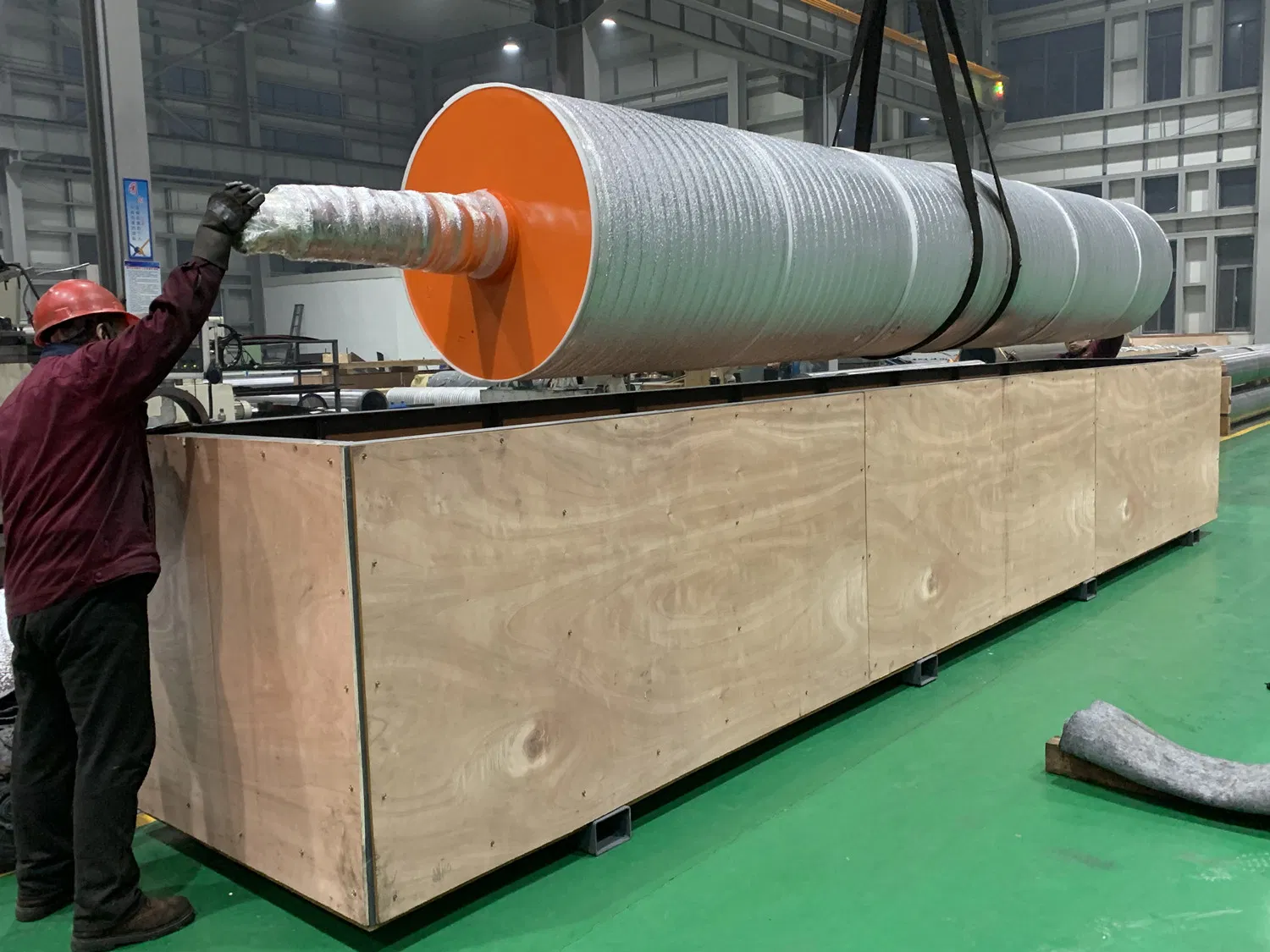In the high-speed, demanding environment of a paper mill, every component matters. But few are as critical to both operational efficiency and final product quality as the rolls that guide, press, and dry the paper sheet. The surface of these rolls is where the magic—and the money—is made or lost. For decades, one technology has been the undisputed king of roll surfaces: hard chrome plating. It's reliable, well-understood, and cost-effective. However, a formidable challenger has emerged in the form of ceramic coatings, promising unparalleled performance and longevity.
As engineers, we're trained to look beyond the marketing claims and dig into the data. The decision between sticking with the tried-and-true hard chrome or investing in advanced ceramic coatings isn't just a matter of preference; it's a complex equation involving wear resistance, corrosion, heat transfer, surface finish, and, of course, the total cost of ownership. So, which technology is right for your specific application? This deep dive will break down the fundamental differences, compare critical performance metrics, and provide a clear-eyed engineering perspective on where each technology truly excels within the paper machine.
The Fundamentals: A Primer on Hard Chrome and Ceramic Coatings
Before we can have a meaningful comparison, it's essential to understand what these two surface technologies are and how they are applied. While both aim to create a hard, durable surface, their underlying principles and resulting properties are fundamentally different.
Hard Chrome Plating: The Established Workhorse
Hard chrome, or functional chrome plating, is an electrolytic process. In simple terms, the paper machine roll (the substrate) is submerged in an electroplating bath containing chromic acid. An electrical current is passed through the solution, causing chromium metal to deposit onto the roll's surface. The result is a dense, hard layer of chromium that is metallurgically bonded to the base metal.
Key characteristics of hard chrome include:
- Hardness: Typically in the range of 68-72 on the Rockwell C scale (HRC), providing good resistance to wear and abrasion.
- Low Coefficient of Friction: This lubricity is excellent for reducing drag and preventing sheet sticking.
- Corrosion Resistance: While generally good, hard chrome has a network of microscopic cracks that, under certain chemical conditions, can provide a pathway for corrosive agents to reach the base metal.
- Finish: It can be ground and polished to an exceptionally smooth, mirror-like finish, which is critical for applications like calender rolls.
To be honest, hard chrome's long history is one of its biggest assets. Engineers and maintenance teams know how it performs, how to repair it, and what its limitations are. It's the known quantity.

Ceramic Coatings: The High-Tech Challenger
Ceramic coatings are not plated; they are applied using thermal spray processes, most commonly High-Velocity Oxygen Fuel (HVOF) or Plasma Spray. In these methods, a powdered material—often a cermet like tungsten carbide or a pure ceramic like chromium oxide—is heated to a molten or semi-molten state and propelled at supersonic speeds onto the prepared roll surface. The particles flatten upon impact, rapidly solidifying and creating a mechanically bonded, lamellar (layered) coating.
Key characteristics of ceramic coatings include:
- Extreme Hardness: This is their standout feature. Depending on the material, hardness can far exceed that of chrome, often measuring over 1000 HV (Vickers Hardness), which is well beyond the HRC scale. This translates to phenomenal wear resistance.
- Chemical Inertness: Most ceramic materials are chemically inert, offering superior corrosion resistance compared to chrome, especially in the harsh chemical environments of a paper mill.
- Porosity: A key engineering consideration. While modern application techniques can achieve very low porosity (<1%), it is an inherent characteristic of the thermal spray process. This porosity must be managed through proper material selection and sealing to prevent issues.
- Tailorable Properties: One of the most significant advantages is the sheer variety of available materials. An engineer can select a specific ceramic composition to optimize for wear, release, corrosion, or thermal barrier properties.
Performance Under Pressure: A Head-to-Head Comparison on Paper Machine Rolls
With the fundamentals established, let's put these two technologies in a direct comparison based on the metrics that matter most to a papermaking engineer. It's here that the trade-offs become clear.
Wear and Abrasion Resistance
In my experience, this is the most common reason mills consider switching to ceramics. Paper stock contains abrasive fillers like clay, calcium carbonate, and titanium dioxide. These particles act like fine-grit sandpaper on roll surfaces.
Hard Chrome: Offers good wear resistance and has been the standard for years. However, in high-wear positions, it will eventually wear down, leading to changes in the roll's profile, requiring more frequent regrinds and ultimately, re-plating.
Ceramic Coatings: This is where ceramics dominate. A tungsten carbide coating, for example, is significantly harder than any abrasive filler used in papermaking. This means the roll surface resists wear for a much longer period, maintaining its profile and extending the time between maintenance shutdowns. The return on investment here is measured in uptime and consistent paper quality.
Corrosion Resistance
The papermaking process is a wet, chemical-laden environment. Corrosion is a constant threat that can lead to pitting, surface defects, and ultimately, roll failure.
Hard Chrome: Provides a solid barrier, but its inherent micro-cracks are its Achilles' heel. Corrosive agents can penetrate these cracks and attack the base steel of the roll, causing the chrome to flake or spall.
Ceramic Coatings: Being chemically inert, the ceramic material itself is virtually immune to corrosion. The potential weak point is the metallic binder (in cermets like tungsten carbide-cobalt) or any residual porosity. However, using corrosion-resistant binders (like nickel or cobalt-chrome) and applying a polymer sealant can create a surface that is, for all practical purposes, impervious to the chemical environment of the mill.

Surface Finish and Doctoring Performance
A smooth, consistent roll surface is non-negotiable for producing high-quality paper. This is especially true for calender and coater rolls where the surface directly imparts finish to the sheet.
Hard Chrome: This is chrome's traditional stronghold. It can be polished to an incredible, low Ra (Roughness average) mirror finish. It doctors cleanly, and its performance is well-documented.
Ceramic Coatings: Historically, achieving a chrome-like finish on ceramics was a challenge. However, modern diamond grinding and superfinishing techniques have changed the game. It's now possible to achieve extremely low Ra finishes on ceramic coatings. Interestingly enough, the controlled, low-level porosity of some ceramics can retain trace amounts of moisture, which can actually improve doctor blade lubrication and life. The interaction is different from chrome, but when engineered correctly, the performance can be equal or even superior.
Cost Analysis: Initial Investment vs. Total Cost of Ownership (TCO)
From an engineering management perspective, cost is always a factor. But a smart engineer looks beyond the initial invoice.
Hard Chrome: The initial cost to plate a roll with hard chrome is significantly lower than applying a ceramic coating. For non-critical applications or mills with tight capital budgets, it remains an attractive option.
Ceramic Coatings: The upfront cost is higher. The thermal spray equipment is more complex, the raw materials are more expensive, and the finishing process is more specialized. However, the TCO can be dramatically lower. A ceramic-coated roll might last 3-5 times longer (or more) than a chrome roll in a high-wear position. This means fewer roll changes, less maintenance downtime, reduced regrinding costs, and more consistent production. The higher initial investment is often paid back several times over during the life of the roll.
Application in Focus: Where Each Roll Surface Technology Shines
A paper machine is not a single entity; it's a series of distinct sections, each with unique operational demands. The choice between chrome and ceramic is not an all-or-nothing proposition. The optimal solution often involves using each technology where it makes the most sense.
Press Section Rolls: Subjected to immense pressure and constant moisture, this is a prime application for wear- and corrosion-resistant ceramic coatings. Their durability ensures the roll profile and water removal efficiency are maintained for longer periods.
Dryer Section Rolls: Here, heat transfer and release (preventing the sheet from sticking) are key. While chrome works well, specially formulated ceramic coatings can offer excellent release properties and are stable at high temperatures. Their wear resistance also protects against damage from doctor blades.
Calender and Coater Rolls: This has been chrome's territory due to the need for a perfect finish. But is the mirror-like finish of chrome still the undisputed king for gloss and smoothness? Many experts now agree that superfinished ceramics can meet or exceed the quality requirements, with the added massive benefit of longer life and resistance to damage. For coating applications, the wear resistance of ceramics against abrasive coating formulations is a game-changer.
Beyond Performance: The Environmental and Safety Implications
In the 21st century, engineering decisions cannot be made in a vacuum. The environmental and safety impact of our choices is a critical part of the equation.
This is, frankly, hard chrome's biggest liability. The traditional hard chrome plating process uses hexavalent chromium (Cr6+), a highly toxic and carcinogenic substance. Regulatory bodies worldwide, including the EPA in the US and REACH in Europe, have placed increasingly stringent regulations on its use and disposal. The long-term viability of hexavalent chrome plating is in serious question, and many companies are actively seeking alternatives to mitigate risk and future-proof their operations.
Ceramic coatings, applied via thermal spray, present a much more favorable environmental profile. While the process generates dust (which is managed by collection systems) and noise, it completely avoids the use of toxic chemical baths. This makes it an inherently safer and more sustainable technology, aligning with modern corporate responsibility goals and reducing regulatory burdens. For many, this factor alone is enough to justify the transition.
The Engineer's Verdict: Choosing the Right Surface Technology
So, after this deep dive, what's the final verdict? The answer, as is often the case in engineering, is: it depends. There is no single "best" solution for every paper machine roll.
Hard chrome remains a viable, cost-effective solution for less demanding applications where wear and corrosion are not primary drivers of failure, and where initial cost is the most critical factor. It is a proven technology with predictable performance.
Ceramic coatings represent the superior engineering solution for high-performance applications. In critical positions where wear, corrosion, and uptime are paramount, the long-term benefits of ceramics are undeniable. Their extended lifespan, reduced maintenance needs, and consistent performance deliver a lower total cost of ownership that easily justifies the higher initial investment. Add in the significant environmental and safety advantages, and the case for ceramics in critical applications becomes incredibly compelling.
The modern paper mill engineer's role is to strategically deploy these technologies. It's about analyzing each roll position, understanding the specific failure modes, and choosing the surface technology that delivers the best long-term value. The future of paper machine roll surfaces is not about replacing one technology with another wholesale, but about intelligently integrating advanced materials like ceramics to push the boundaries of efficiency, quality, and sustainability.
For more detailed information, please visit our official website:paper machine roll
About the author: Dr. Alistair Finch is a Materials Engineer with over 20 years of experience specializing in surface technologies for industrial applications. With a Ph.D. focused on thermal spray coatings and wear mechanics, he has spent his career helping heavy industries, particularly pulp and paper, optimize component lifespan and operational efficiency. Dr. Finch is a passionate advocate for leveraging advanced materials to solve complex engineering challenges, balancing performance with long-term economic and environmental sustainability.


